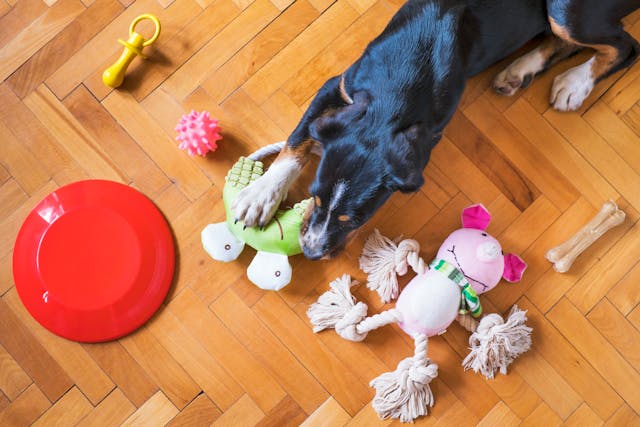
Simple and Effective Tips for Cleaning Your Pet’s Toys
Pets love carrying their favorite toys around, chewing on them, and leaving them in unexpected places. Over time, these toys collect dirt, saliva, and germs, potentially becoming a health risk for both pets and humans.
Luckily, keeping pet toys clean is simple with the right approach.
Cleaning Plush Toys
Plush toys absorb dirt and odors easily, making them tricky to clean. The best method is machine washing—place them in a mesh laundry bag and use hot water with a pet-safe detergent or white vinegar. Avoid harsh chemicals like bleach, which can be harmful to pets.
For handwashing, soak the toys in warm water with a mild detergent or vinegar, scrub gently, rinse thoroughly, and air dry completely before giving them back to your pet.
Cleaning Rope Toys
Rope toys trap dirt and bacteria, making regular cleaning essential. Wash them in a mesh bag in the washing machine with hot water, or soak and scrub them by hand with pet-safe soap. Rinse well and air dry.
Cleaning Rubber and Plastic Toys
Plastic and rubber toys can deteriorate in the washing machine, so handwashing is best. Soak them in warm water with a bit of dish soap, scrub away dirt, rinse thoroughly, and let them air dry. Some toys may be dishwasher-safe—check the manufacturer’s instructions, but avoid using the dry cycle to prevent melting.
How Often Should You Clean Pet Toys?
A study by the NSF found pet toys among the top ten germiest household items, harboring bacteria like Staph, mold, and yeast. To reduce risks:
- Wash frequently used toys at least once a week.
- Clean toys immediately if they get covered in dirt or food.
- If your pet eats a raw diet, disinfect toys daily to prevent bacterial contamination.
Keeping Pet Toys Organized & Clean
- Set a Cleaning Routine: Pick a day each week to clean toys, such as Fridays.
- Keep Supplies Ready: Store pet-safe detergents and brushes in a cleaning caddy.
- Use Storage Bins: Keep toys in designated baskets to reduce dirt buildup.
- Rotate Toys: Limit the number of toys out at a time to prevent clutter.
- Replace Worn-Out Toys: Dispose of damaged or excessively dirty toys.
- Watch for Mold: If a toy smells musty or has visible mold spots, throw it away immediately.
With a little effort, you can keep your pet’s toys fresh, safe, and free from harmful bacteria!
